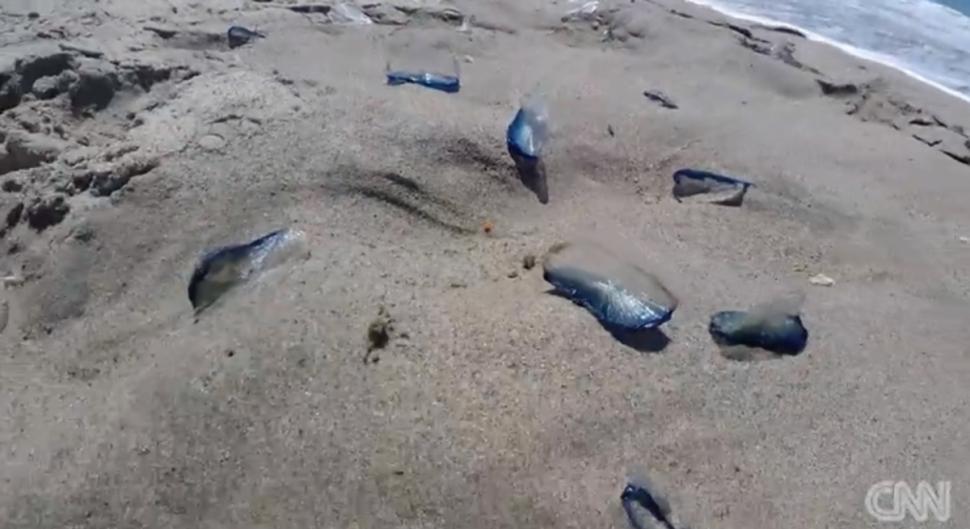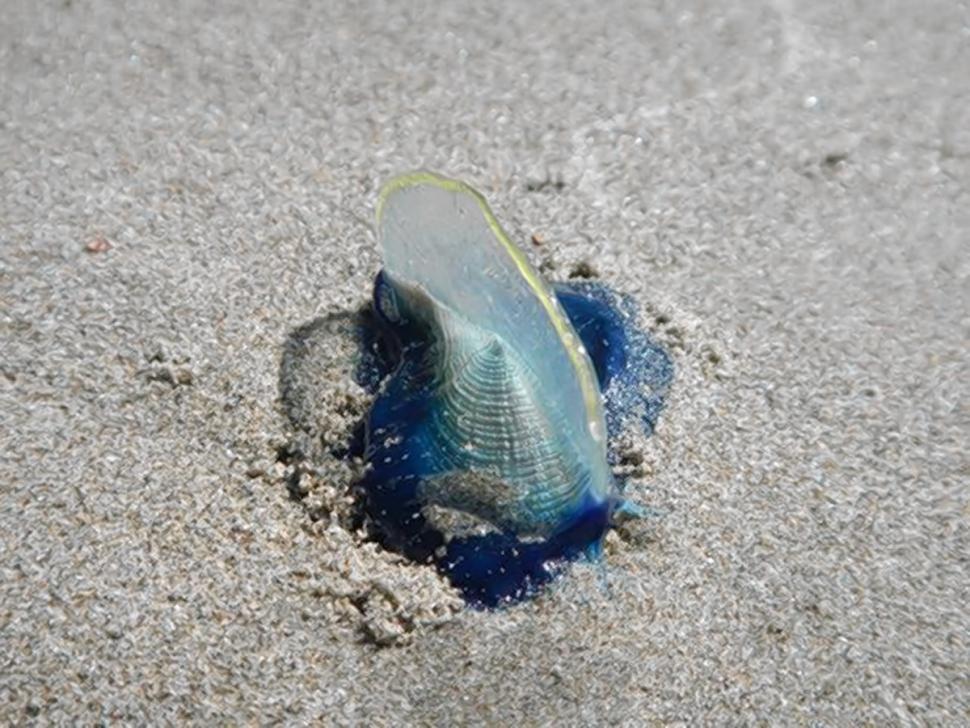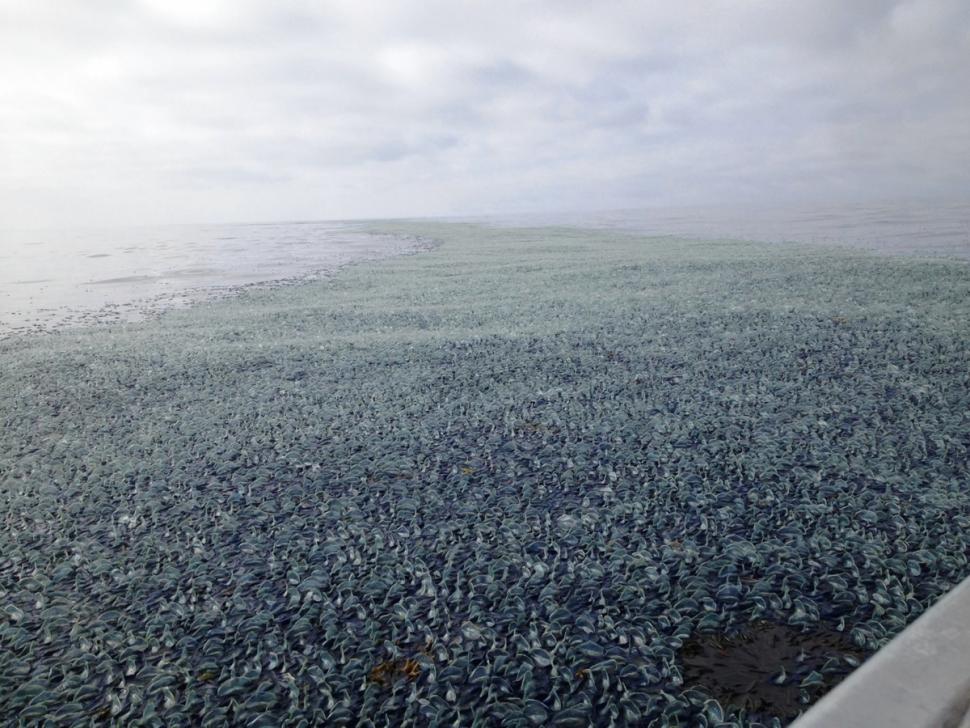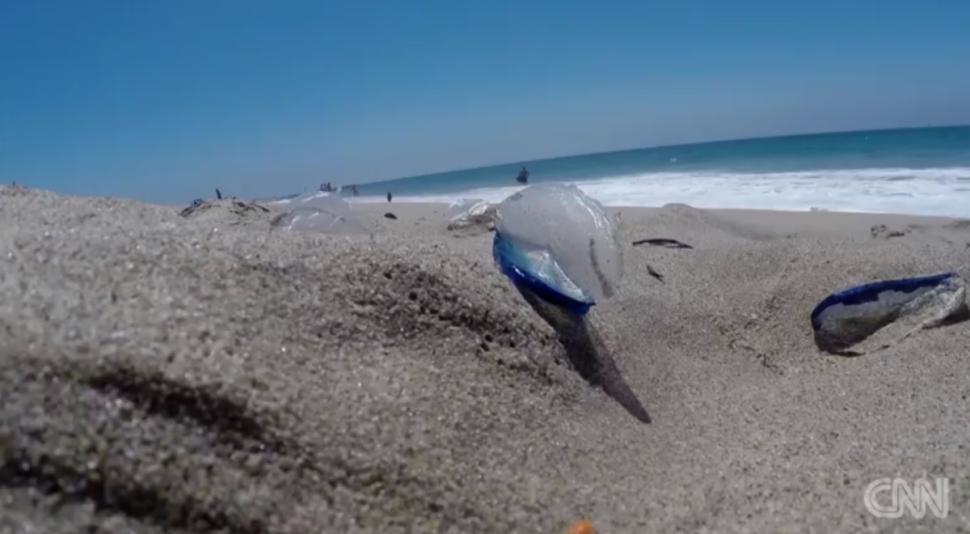
Velella velella, a blue sea creature that bears some resemblance of a jellyfish, is about the size of a hand and usually remains in the water. They can be seen washed ashore in this CNN video.
But a shift in the currents and winds have brought thousands of them onto the West Coast this summer, creating an excitement over an animal of the ocean that is usually kept hidden from the public.
David Bader, director of education at the Aquarium of the Pacific in Long Beach, Calif., told the Daily News these organisms have been seen popping up this summer, beginning with Washington and Oregon earlier on and farther south in intervals as the summer progressed.
People have been tracking the progress and now that it has reached the populous Southern California region, discovery of the creatures has become a popular event for the beachgoers, he said.
"I'm very excited to see how interested people have been with it," he said. "It's a great example of the fact that the ocean is 95% unexplored. We talk about the ocean but we really know a small amount of it."
The "by-the-wind sailors" float on the ocean's surface and have a fin that acts as a sail for the wind to transport it, Bader said. Usually the breeze takes them further out into the ocean but occasionally they are drawn to the shore, he said.
"It's something, unless you know to look for them, you usually can't see them," he said.
The creatures are very unique from other known sea animals, Bader said. The velellas are actually "colonial organisms," Bader said. It is not one main animal but a colony of smaller animals that all live together.
"They don't exist as individuals. They exist as a colony," he said. "They are unlike most other organisms we are accustomed to."
The creatures cannot live once they appear on the shore and after they dry up look like "little pieces of plastic," Bader said. They do sting their food, but are not powerful enough to pierce a human's skin he said.
But Bader initially told The News it "was not a big concern" that the so many of these animals were dying because "certainly there are enough baby velellas reproducing out there."
But then he paused and admitted "that would presume we know something about them except we really don't."
jlandau@nydailynews.com Follow on Twitter @joelzlandau






Comment: Something strange and worrying is definitely going on, since Velella velella is only one out of many mysterious and rare creatures that were either caught or spotted in the recent times: Creatures from the deep signal major Earth Changes: Is anyone paying attention?